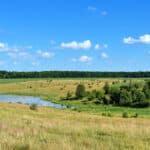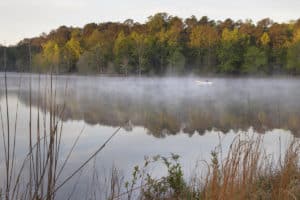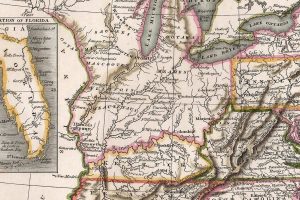Fifty years ago, I stood on a stage at Morningside School, dressed as a British officer from 1758. My eighth-grade class was celebrating Pittsburgh’s Bicentennial.
I was Colonel Henry Bouquet, second in command under General John Forbes who, though ill and litter-bound, had led 7,000 British soldiers and colonials across Pennsylvania to the Forks of the Ohio River.
The French had staked a claim to the Ohio country a decade earlier, then built Fort Duquesne at the point where the Allegheny joined the Monogahela to form the Ohio. This gave them a water highway to the Mississippi and New Orleans.
George Washington and a handful of Virginians had taken a run at the Forks in 1754, only to be whipped badly and allowed to withdraw. This defeat initiated the French and Indian War (1754-1763) and brought immense consequences.
At the time, both the Pennsylvania and Virginia colonies claimed the Ohio country–Ohio, southwestern Pennsylvania and northern West Virginia. Virginia’s legal theory of western land ownership was pretty simple: We say we own it, therefore, we do.
No Virginians or Pennsylvanians had settled in the Ohio country in 1758. So why were Forbes, Bouquet and George Washington — leader of the Virginians — about to attack a French fort when the closest settlements were more than 100 miles to the east?
The British wanted to remove the French for reasons of politics, commerce, religion and defense. The Pennsylvanians wanted to establish East-West trade and strengthen their Ohio land claim.
The leaders of Virginia wanted western land, and, as the saying around here goes, “they wanted it give to them.”
Twenty-five big shots had formed the Ohio Company of Virginia in 1747 to procure huge land grants from the Crown. Among their names were Lee, Fairfax, Mason, and Augustine and Lawrence Washington. They were mainly tobacco planters, linked by family, marriage, religion, business and politics.
They wanted to get rich quick with a simple idea: Acquire land for free, divide it and then flip it for cash. Several other companies were formed by other Virginians to lock up other grants.
And one more thing: Two of Virginia’s British administrators — first Robert Dinwiddie, lieutenant governor and de facto head of the colony, and later, John Murray, Earl of Dunmore — were cut into the deal.
The Ohio Company started with 200,000 acres west of the Alleghenies and south of the Ohio River. The Company needed control of the Forks to make land sales safe.
Chasing out the French was as much about protecting Virginia land speculators as anything else. That’s why Dinwiddie had sent Washington and the Virginia militia in 1755 and 1758.
The Company also needed tomahawk fodder. Virginia policy had been to settle its western borderlands by giving 500 acres to each “war-like Christian man,” heavily armed. Much of the Shenandoah Valley was given to middlemen who promised to stick such souls on the front line.
Most of these immigrants were Scots, Lowlands Presbyterians then in northern Ireland for religious and economic reasons. Mixed in were French Huguenots, German Protestants and Welsh. They wanted freedom from landlords, religious liberty and land.
They were sold land cheap, given it or allowed to earn it. Many drifted west into the mountains, claiming ownership as squatters under their own unwritten “forest law”—100 acres for every one of cultivated corn; the “cabin right” of 100 acres around any structure; and the “tomahawk right,” which took in land that was enclosed by virtue of “chops” in boundary trees.
Until the late 1740s, Virginia’s western border had been relatively peaceful. The Iroquois-linked tribes did not value the Valley because it was too warm to produce the thick beaver pelts they needed for trade. As white settlement pushed west, they resisted.
The bloodbath in the Appalachians and the Ohio country during the last half of the 18th Century was a rich man’s war and a poor man’s fight. The settlers found themselves fighting for their own land and, more broadly, for the land that Virginia’s speculators had been given.
So Dinwiddie sent George Washington in 1754 to take the Forks for largely private ends, including their own.
The next year, Washington survived Braddock’s defeat, taking command when the General was shot off his horse and turning a near rout into a retreat. During the evening of July 9th on the river flat across from Fort Duquesne where the Pittsburgh Pirates and Steelers now play games, the victorious Natives slowly tortured their British captives to death.
In 1758, a British reconnaissance force that Forbes had sent toward the Fort was led into a Custer-like debacle with many killed and captured. Despite this initial victory, Duquesne’s defenders knew they could not defeat Forbes’s army. So they burned their Fort and left the heads of captured Highlanders impaled on spikes above their kilts.
Bouquet with Washington by his side renamed the smoldering mess, Fort Pitt, after British Secretary of State William Pitt, The Elder, The town became Pittsburgh.
Five years later, Bouquet and his commander, Sir Jeffrey Amherst, agreed that the tribes around Fort Pitt remained a problem. Amherst wrote to Bouquet, suggesting the “Total Extirpation of this Execrable Race.” Bouquet replied that the “Vermine” be hunted with English dogs, “the Spaniard’s Method.” Their letters show they agreed on giving the “Vermine” smallpox-infected blankets and handkerchiefs. This was done, causing an outbreak.
What started as Washington’s 1754 humiliation ended with a victory in 1763 that gave Britain all land between the Great Lakes and the Mississippi along with Spain’s Florida, which produced war debt the British wanted the colonists to pay through taxes, which led to the American Revolution—won only because of French help, which gave America the British claim in lands south of Canada and east of the Mississippi, which opened those lands to American settlers, which led to the Louisiana Purchase and eventually to America’s 48 continental states. Washington was, indeed, the father of our country.
Speaking as Bouquet, I proclaimed: “We must defeat the Indians!” I was given no lines explaining either the why or the how.
We named a nice town and a fine college after Lord Amherst. The University of Pittsburgh is at the intersection of Forbes Avenue and South Bouquet Street. Mount Washington overlooks the Forks of the Ohio.
Ange de Menneville, the Marquis de Duquesne, governor of New France in the 1750s, lives on as a university, a light company, a cable-car incline up Mount Washington and a defunct beer.
Some recall Hokoleska (Cornstalk) and Pontiac, who was turned into a noble-looking illuminated plastic hood ornament on his namesake 1950s car, the Chieftain.
The tribes protected themselves and their land as best they could. Americans had British troops, land-hungry immigrants and border landowners refilling their ranks. The tribes had only themselves. They held their own in battles but could not beat unseen enemies–smallpox, measles and influenza.
Land lay at the core of why we did what we did.
Land around the Shenandoah Valley has been in play again since the 1960s. The parcels get smaller and the prices get higher.
Perhaps this year, Pittsburgh’s 250th birthday, some eighth grader in a funny hat might invoke those who owned the Forks of the Ohio for 10,000 years before we did.
This content may not be used or reproduced in any manner whatsoever, in part or in whole, without written permission of LANDTHINK. Use of this content without permission is a violation of federal copyright law. The articles, posts, comments, opinions and information provided by LANDTHINK are for informational and research purposes only and DOES NOT substitute or coincide with the advice of an attorney, accountant, real estate broker or any other licensed real estate professional. LANDTHINK strongly advises visitors and readers to seek their own professional guidance and advice related to buying, investing in or selling real estate.









Add Comment